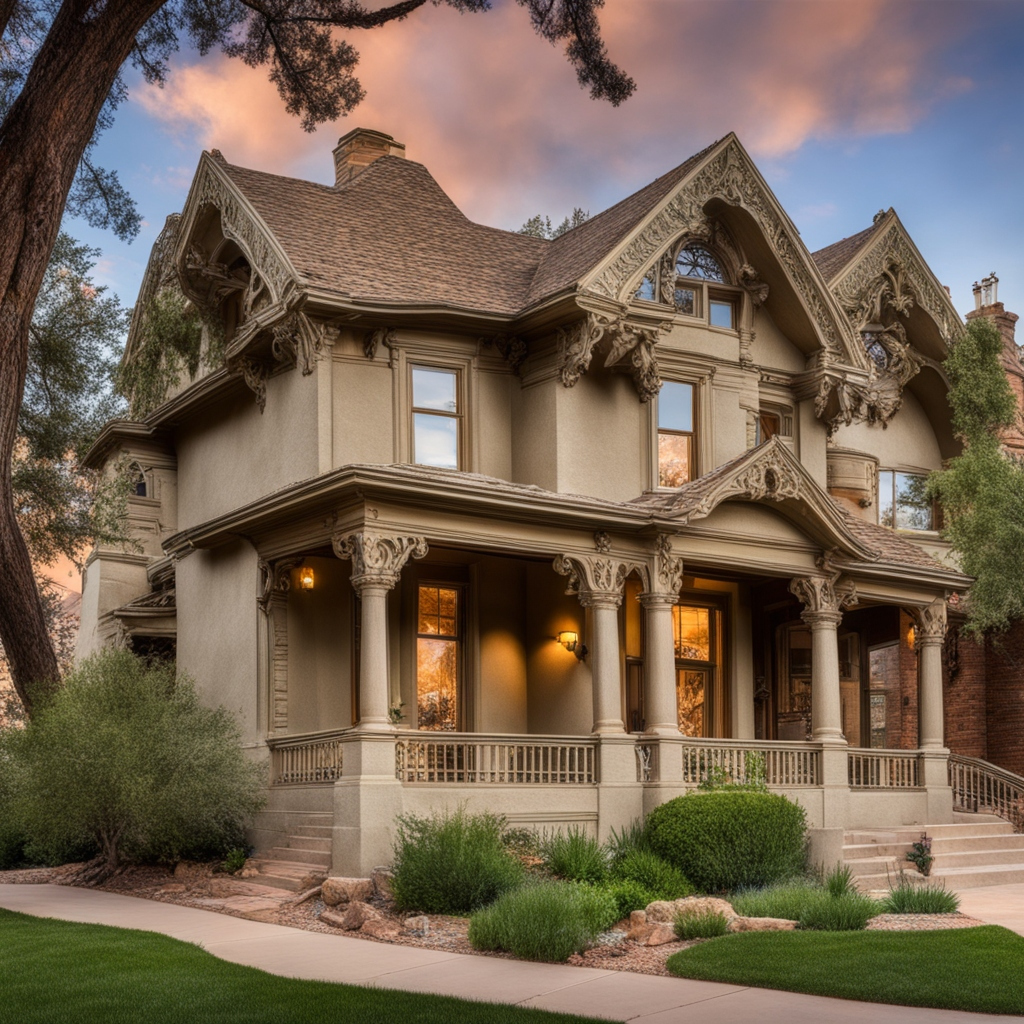The Pros and Cons of Living in a Historic District in Colorado Springs
Colorado Springs, with its rich history and charming architecture, boasts several historic districts that transport residents back in time. While living in a historic district can offer a unique and picturesque experience, it’s essential to weigh the pros and cons before making this significant decision.
Pros:
- Architectural Beauty: Historic districts are known for their unique and aesthetically pleasing architecture. Living in such an area allows residents to enjoy the craftsmanship and character of homes from a bygone era.
- Cultural Heritage: Historic districts often come with a sense of cultural significance. Residents become a part of a community that values preserving its history, fostering a strong sense of identity and pride.
- Preservation Tax Credits: Depending on local regulations, homeowners in historic districts may be eligible for tax credits or incentives for preserving and restoring their homes. This can be a financial advantage for those invested in maintaining historical integrity.
- Community Character: Historic districts often feature tree-lined streets, charming parks, and a cohesive community atmosphere. Residents may enjoy a close-knit neighborhood with unique events and shared traditions.
- Increased Property Value: Well-maintained historic homes can appreciate over time. The demand for unique, historic properties in desirable districts often leads to increased property values.
Cons:
- Restrictive Zoning Regulations: Living in a historic district comes with strict zoning regulations to preserve the area’s character. This can limit the extent to which homeowners can modify or expand their properties.
- Maintenance Costs: Maintaining a historic home can be more expensive than modern counterparts. Unique materials, craftsmanship, and adherence to historical accuracy can contribute to higher maintenance costs.
- Limited Modern Amenities: Historic homes may lack some modern amenities found in newer constructions. Renovating to incorporate modern conveniences while preserving historical integrity can be a delicate balance.
- Potential for Decay: Neglected historic districts may face challenges of decay and disrepair. Residents might find themselves in neighborhoods with aging infrastructure and a need for community revitalization.
- Approval Processes: Any modifications to a home in a historic district often require approval from local historic preservation boards. This process can be time-consuming and may limit homeowners’ flexibility in home improvement projects.
Historic District Benefits
Living in a historic district in Colorado Springs can be a rewarding experience for those who appreciate history, architecture, and community. However, potential residents should carefully consider the limitations and responsibilities associated with maintaining a home in such an area. By understanding the pros and cons, individuals can make informed decisions about whether the charm of a historic district aligns with their lifestyle and preferences.

The Pros and Cons of Living in a Colorado Springs Historic District
With its wide variety of architecture and history, Colorado Springs offers homebuyers several options when it comes to historic districts full of charm and character. Before purchasing property designated as historic, owners should weigh key advantages and potential challenges involved:
Pros architectural appeal – From Victorians to Craftsman bungalows, historic homes offer stunning styles modern houses rarely achieve, satisfying artistic tastes. Pride of place – Strong neighborhood identities with preserved architecture foster robust communities. property value stability – When maintained properly and without major exterior alterations, historic homes typically enjoy consistent appreciation during sales. Some even qualify for preservation grants or tax credits to offset renovation costs and restrictions involved. Cons renovation constraints – Exterior changes require special reviews/approvals to protect historical integrity, making simple upgrades like window replacements more complex.
Required repairs must adhere to strict historical standards regardless of owner budget constraints or personal preferences. restrictions on additions/expansion – Historic preservation rules significantly limit possibilities for additions like extra bedrooms or garages to accommodate evolving owner needs. For homebuyers drawn to esteemed neighborhoods like Old Colorado City but hesitant about limitations, speaking with current owners plus checking available grant funding can clarify if pursuing a history-rich property aligns with practical means and lifestyle vision. Reviewing district guidelines thoroughly before purchasing allows fully informed decisions.

Stepping Back in Time: The Allure and Challenges of Living in a Historic District in Colorado Springs
Colorado Springs boasts a rich history, woven into the fabric of its charming, albeit sometimes quirky, historic districts. Stepping into these neighborhoods is like stepping into a postcard – grand Victorian mansions, tree-lined streets, and a palpable sense of community. But before you pack your vintage steamer trunk and set your sights on a quaint bungalow, consider the pros and cons of living in a historic district:
Pros:
- Architectural Charm: Immerse yourself in a bygone era, surrounded by stunning architecture and meticulously preserved homes. Witness the craftsmanship of yesteryear in intricate details, ornate facades, and unique character that modern developments simply can’t replicate.
- Community Spirit: Historic districts often foster a strong sense of community. Neighbors gather on porches, chat over picket fences, and celebrate local events together. This friendly atmosphere can be incredibly endearing, especially for those seeking a close-knit social circle.
- Walkable Lifestyle: Many historic districts are designed for pedestrians. Forget car dependence; enjoy strolling to charming cafes, browsing antique shops, and exploring local landmarks all within walking distance. This can be a welcome change from car-centric suburban living.
- Investment Potential: Owning a property in a well-maintained historic district often translates to long-term investment value. These houses tend to appreciate steadily due to their unique character and cultural significance.
Cons:
- Strict Regulations: Living in a historic district comes with a price – regulations. Strict architectural guidelines govern renovations, additions, and even paint colors. Prepare for potential clashes with preservation boards and neighborhood committees if you crave customization.
- Hidden Costs: Maintaining a historic home can be expensive. Be prepared for upkeep costs associated with vintage materials, intricate detailing, and potential plumbing or electrical upgrades. Unexpected repairs can become a budget drainer.
- Limited Modern Amenities: Craving a sleek, open-plan kitchen or a home theater? Many historic homes come with smaller rooms, quirky layouts, and limited space for modern amenities. Adapting to a different era of living might require compromises.
- Tourism Buzz: Popular historic districts can be tourist magnets, bringing noise, foot traffic, and occasional parking nightmares. While the charm of sharing your neighborhood with visitors is undeniable, prepare for the occasional disruption to your peace.
Finding Your Historic Haven:
The decision to live in a historic district is a personal one. Weigh your priorities, budget, and lifestyle preferences carefully. Research specific districts, understand their regulations, and talk to current residents to get a firsthand feel for the unique blend of charm and challenges.
Ultimately, living in a historic district is a trade-off – embracing the beauty and quirks of an era in exchange for a slower pace, community spirit, and investment potential. If you crave authenticity, value community, and appreciate architectural preservation, stepping into a historic district might be your perfect Colorado Springs adventure. Just remember, along with the porch swings and picket fences, come regulations, upkeep costs, and a touch of tourist buzz. So, lace up your walking shoes, open your mind, and embark on a journey through time – your historic haven might just be waiting for you.
